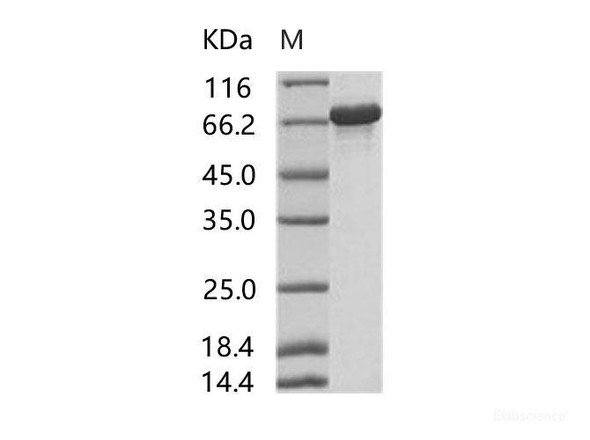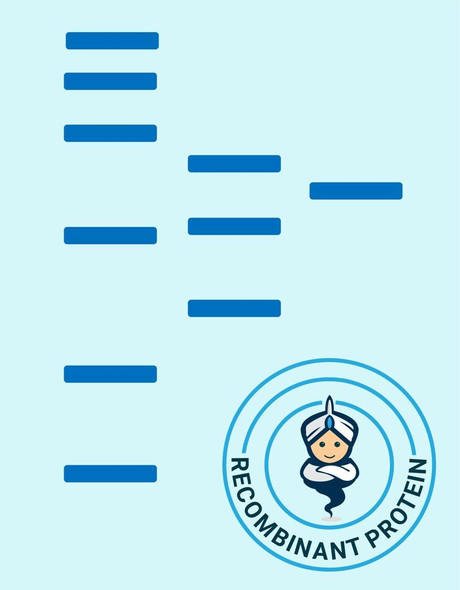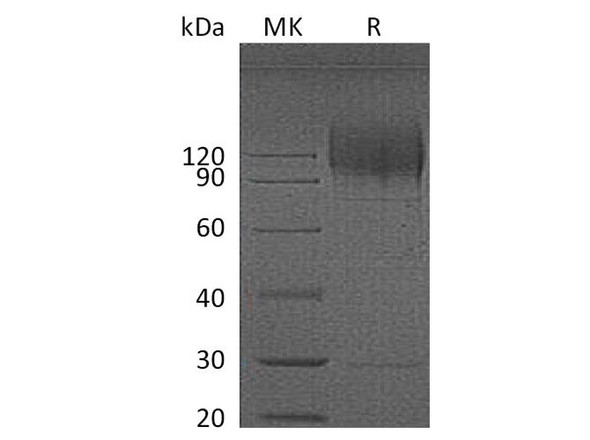HIV-1 p66 pol Recombinant Protein (RPPB5579)
- SKU:
- RPPB5579
- Product Type:
- Recombinant Protein
- Species:
- Viral
Description
| Product Name: | HIV-1 p66 pol Recombinant Protein |
| Product Code: | RPPB5579 |
| Size: | 10µg |
| Species: | HIV-1 |
| Target: | p66 pol |
| Source: | Baculovirus Insect Cells |
| Physical Appearance: | Sterile filtered colorless clear solution. |
| Formulation: | The protein solution contains 30mM Tris pH-7, 0.15M NaCl and 0.2mM EDTA. |
| Stability: | Recombinant HIV-1 p66 although stable at 4°C for 3 weeks, should be stored below -18°C. For long term storage it is recommended to add a carrier protein (0.1% HSA or BSA). Please avoid freeze-thaw cycles. |
| Purity: | Greater than 90.0% as determined by HPLC analysis & SDS-PAGE. |
Human immunodeficiency virus (HIV) is a retrovirusthat can lead to a condition in which the immune systembegins to fail, leading to opportunistic infections. HIV primarily infects vital cells in the humanimmune systemsuch as helper T cells(specifically CD4+ T cells), macrophagesand dendritic cells. HIV infection leads to low levels of CD4+ T cells through three main mechanisms: firstly, direct viral killing of infected cells; secondly, increased rates of apoptosisin infected cells; and thirdly, killing of infected CD4+ T cells by CD8 cytotoxic lymphocytesthat recognize infected cells. When CD4+ T cell numbers decline below a critical level, cell-mediated immunityis lost, and the body becomes progressively more susceptible to opportunistic infections. HIV was classified as a member of the genus Lentivirus, part of the family of Retroviridae. Lentiviruses have many common morphologies and biological properties. Many species are infected by lentiviruses, which are characteristically responsible for long-duration illnesses with a long incubation period. Lentiviruses are transmitted as single-stranded, positive-sense, enveloped RNA viruses. Upon entry of the target cell, the viral RNA genomeis converted to double-stranded DNAby a virally encoded reverse transcriptasethat is present in the virus particle. This viral DNA is then integrated into the cellular DNA by a virally encoded integraseso that the genome can be transcribed. Once the virus has infected the cell, two pathways are possible: either the virus becomes latentand the infected cell continues to function, or the virus becomes active and replicates, and a large number of virus particles are liberated that can then infect other cells.
HIV-1 p66 Recombinant- is a 71kDa protein derived from pol gene. The HIV-1 p66 is glycosylated with N-linked sugars and produced using baculovirus vectors in insect cells.










